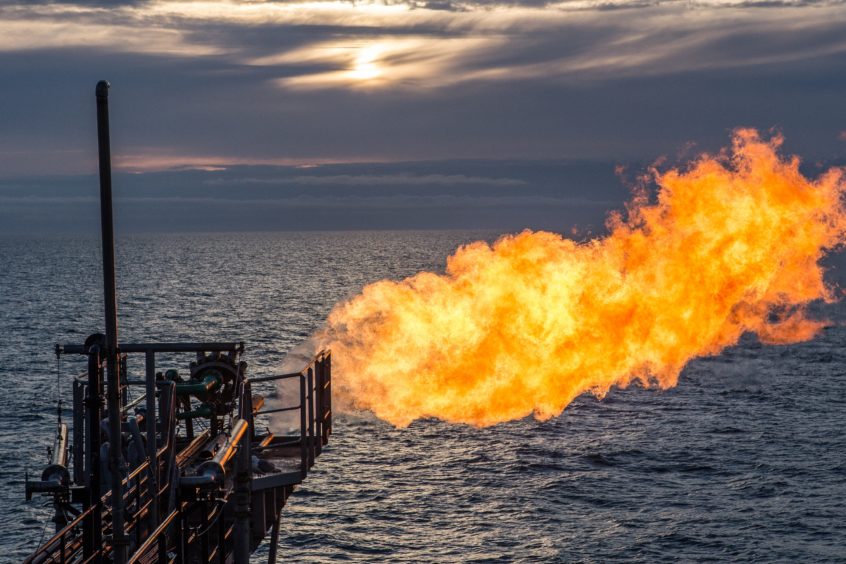
Flaring in the North Sea fell by 22% in 2020 as production facilities cut the overall volume to 33 billion cubic feet (bcf).
The reduction, which is roughly equivalent to the gas demand of 200,000 homes, means the level of flaring on the UK continental shelf last year was the lowest on Oil and Gas Authority (OGA) records.
Flaring intensity, the measure of how much gas was flared per unit of oil produced, also decreased from 114 standard cubic feet of gas for every barrel of oil (scf/bbl) to 95 in 2020, a 10-year low.
It means the measure, which stood at 128 in 2017, has now dropped for three consecutive years.
Last year, the industry regulator rolled out “tougher measures” to clamp down on unnecessary flaring and venting.
The OGA started benchmarking North Sea operators on their emissions – it now releases data each month.
In 2020, trade body Oil and Gas UK published a report that set a target of halving all emissions by 2030, including from flaring and venting.
It is expected to release its Methane Action Plan later this year.
Meanwhile, the Government’s Energy White Paper, published in December 2020, committed to the World Bank’s ‘Zero routine flaring by 2030’ initiative, and further pledged to work with regulators to eliminate the practice as soon as possible ahead of that date.
The OGA implemented its revised strategy last month, putting the onus on industry to act in a way consistent with net zero ambitions and lowering production emissions.
Updated guidance for the industry is due to be published later in the year, setting out the revised regulatory approach to flaring and venting and changes to the consenting and reporting regime.
Venting, which accounts for about 0.15% of total UK greenhouse gas emissions, was a “more mixed picture” in 2020.
Despite falling significantly from 2018 to 2019, 3.6 bcf of gases were vented last year, an increase of 0.42 bcf.
Within that total, venting of methane – which has a high atmospheric warming potential – decreased by 0.07 bcf in 2020 to 0.79 bcf.
However, venting of CO2 (and other non-hydrocarbon gas) increased by 0.49 bcf to 2.8 bcf.
The OGA said it is aware of the sources of this increase and is “taking steps to address them at source”.
Hedvid Ljungerud, OGA Director of Strategy, said: “While there is more work needed from industry and the OGA, the flaring figures in particular are encouraging and show that clear focus can make a significant impact.
“The OGA is supporting and holding industry to account to reduce emissions and will soon be publishing net zero expectations, which will set out how every stage of operations must demonstrate a commitment to reducing greenhouse gases.
“We will continue monitoring closely and reflect that in decision-making when operators apply for consents and authorisations for flaring and venting.”
Recommended for you

